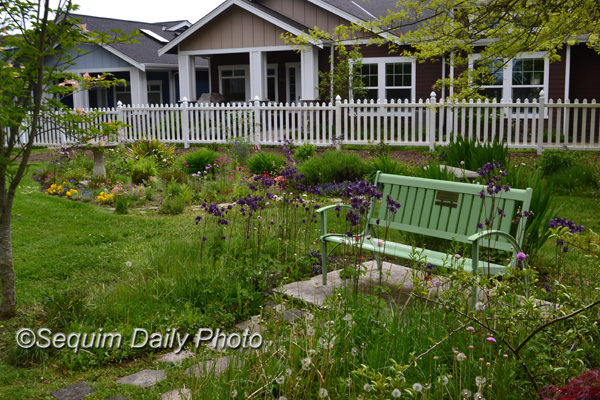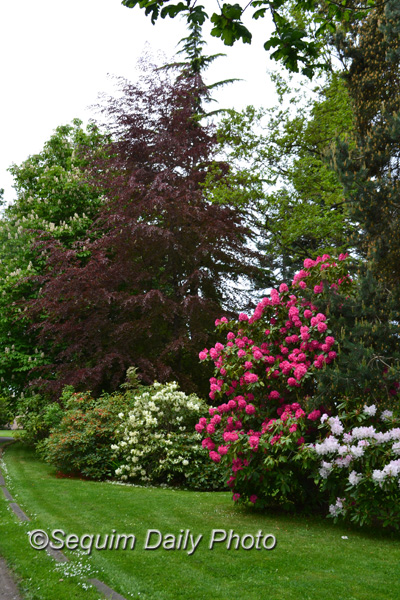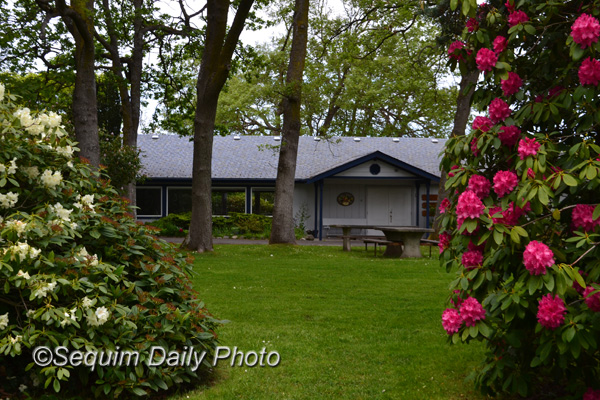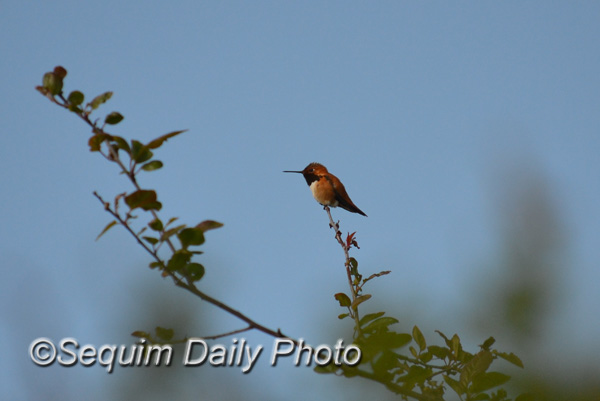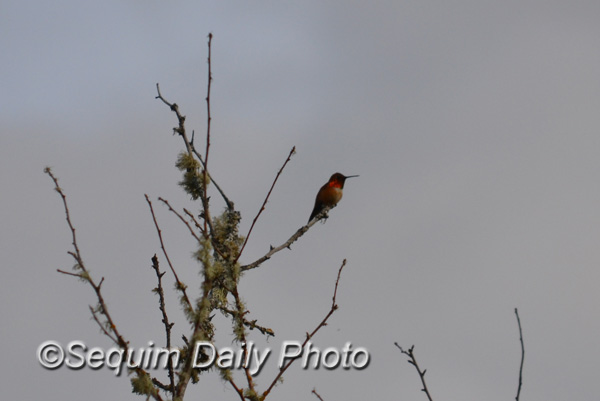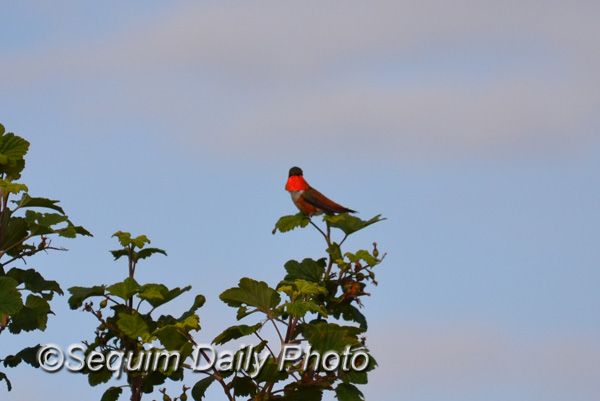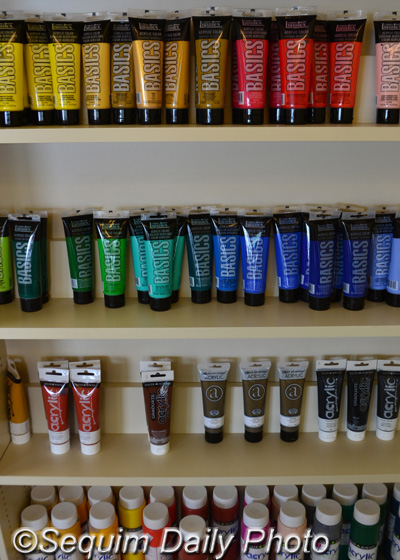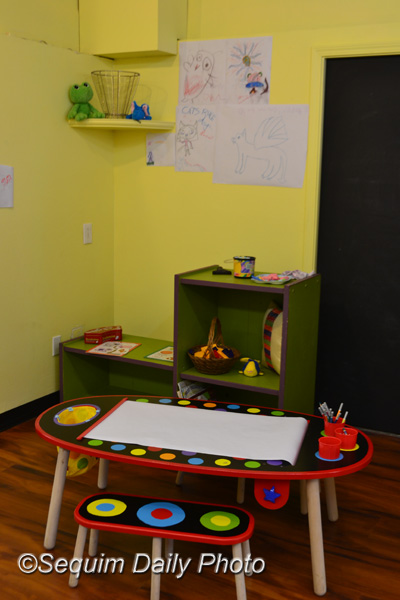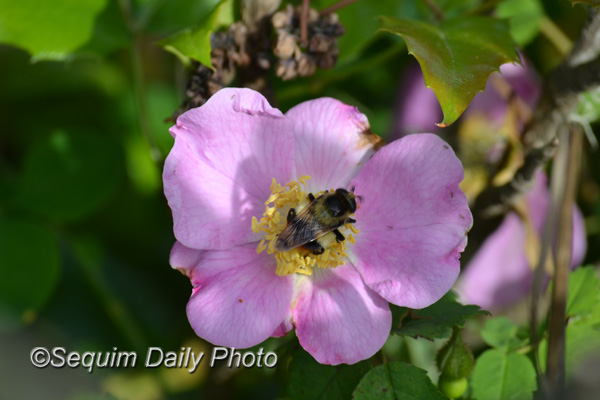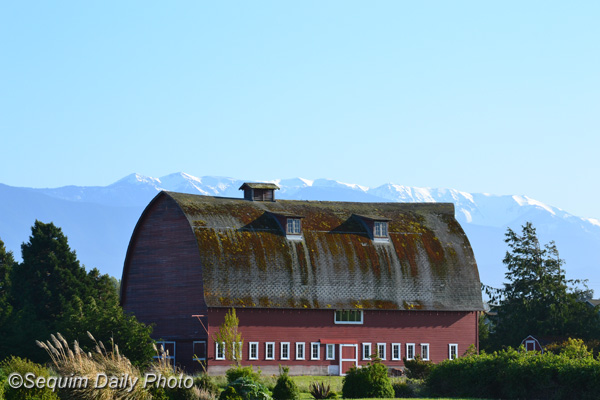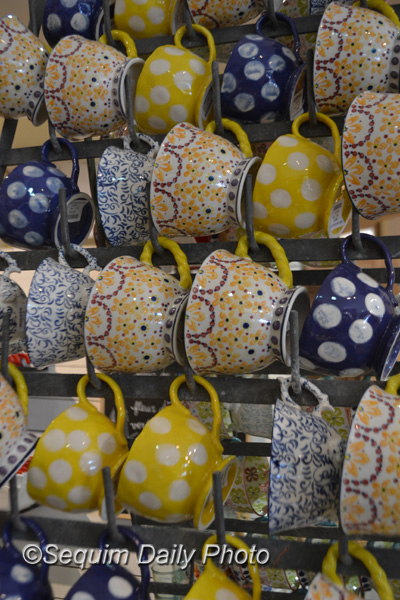In reading about Memorial Park I learned that it was originally a cemetery early in the last century and eventually became neglected and overgrown. When it was decided that the land would be reclaimed, graves were dug up and relocated. But not every resident of the graveyard had a survivor who could approve relocation. In the end there were some remains that could not be moved. These were moved to a “quiet corner” of the park, which I sought out on my visit.
As you can see, the park closely borders a residential area. And this little garden borders the park’s cemetery.
This is what’s left of the cemetery, taken through a wire fence. It’s not a feature of the park that a visitor might stumble into, nor expect. But knowing its history I find it a unique thread back into Sequim’s past.
